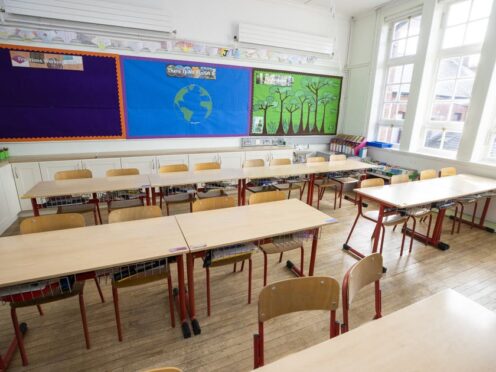
There are signs that more children are gaining places at their first choice of secondary school in a number of areas in England, a survey suggests.
Hundreds of thousands of families have spent Friday finding out which secondary school their child will join this September, on what is commonly known as National Offer Day.
Findings from a PA news agency survey of 70 local authorities in England, excluding London, suggest that a youngster’s chance of winning a place at their preferred school has improved since last year.
The proportion of pupils gaining their top choice in the capital also rose slightly this year, according to data collated by London Councils, although around three in 10 children missed out on a place at their most preferred school.
Both the PA survey and London Councils release indicated local authorities have broadly received less applications overall, compared with 2023.
Early figures from surveyed councils, which provided comparable data, show that 40 have seen a rise in the proportion of pupils getting their first preference, 22 have seen a fall and eight have seen no change.
Among the areas where high proportions of pupils have obtained their first preference are East Riding of Yorkshire, where 97% got their top choice, St Helens, where 96% also were offered their first pick, and Wiltshire, where 95% gained their preference.
In comparison, in Slough, only 66% of children got their first preference, while in Birmingham and Reading 71% and 72% got their top choice respectively.
All figures from PA’s survey have been rounded to the nearest percentage.
Data also showed 50 councils received less applications overall for secondary school places this year, compared with 2023, although 29 of these saw differences of less than 100.
Figures from the Pan London Admissions Board showed 70.5% of children who applied to start at a secondary school this autumn received an offer from their first preference, compared to 69.78% last year, figures show.
A breakdown by London borough shows significant differences in the proportion of families securing their top choice, with nearly two in five youngsters missing out in some areas, such as Hammersmith and Fulham, and Lewisham.
Meanwhile, the total number of applications made in the capital – 90,348 – decreased by 2.48% compared to last year, which London Councils said could be down to the falling birth rate across the city, the effect of the UK leaving the EU, and families leaving London due to changes in “circumstances and working patterns”.
School leaders’ union NAHT continued to warn of oversubscription of schools.
General secretary Paul Whiteman said: “This can be an anxious time for families. Choosing the right school and securing a place there is a huge moment in a child’s life and not everyone will get their first choice.
“There is extra pressure on secondary admissions this year as there is a pupil population bulge that is currently hitting secondary schools. Many schools are particularly oversubscribed, especially in certain areas of the country.
“The Government urgently needs to do more to address the recruitment and retention crisis schools are facing so that there are enough suitably qualified, specialist teachers to cope with the growing numbers of pupils moving through the system, as well as ensuring a co-ordinated approach to place planning.
“Until the Government creates a national strategy to guarantee there are enough school places for every child in England, the annual anxious wait for families uncertain whether they will get their preferred place will continue.”
Teach First CEO Russell Hobby also spoke of the need for investment in schools.
He said: “Today is a hugely important day for children across the country when they find out which secondary school they’ll be going to.
“With well-supported teachers, leaders and sufficient levels of funding, we can ensure that every community has a great secondary school for young people to attend.
“The sad truth is that today too many young people in low-income communities don’t have the choice of a brilliant school nearby, which is why we must focus investment into schools and the services around them in these areas.”
Official data shows that last year, 82.6% of pupils were offered their first choice of secondary school – which was down slightly on 83.3% in 2022.
A Department for Education spokesperson said: “Delivering good quality school places is a top priority for this Government and almost 1.2 million additional pupil places have been created since 2010, with many more in the pipeline.
“In 2023, over 80% of families were offered their first-choice secondary school and over 90% received offers from one of their top three choices.”

Enjoy the convenience of having The Sunday Post delivered as a digital ePaper straight to your smartphone, tablet or computer.
Subscribe for only £5.49 a month and enjoy all the benefits of the printed paper as a digital replica.
Subscribe